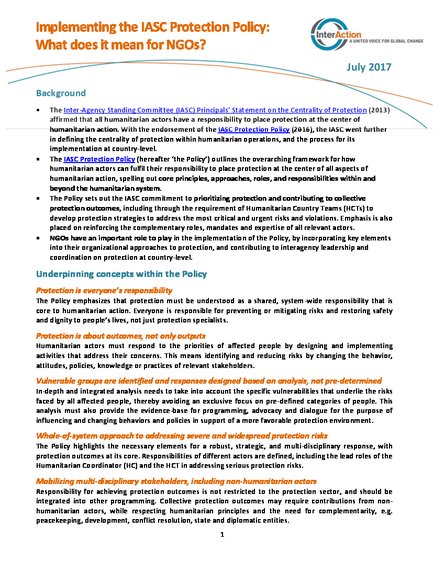
The Inter-Agency Standing Committee (IASC) Principals’ Statement on the Centrality of Protection (2013) affirmed that all humanitarian actors have a responsibility to place protection at the center of humanitarian action. With the endorsement of the IASC Protection Policy (2016), the IASC went further in defining the centrality of protection within humanitarian operations, and the process for its implementation at country-level.
The IASC Protection Policy (hereafter ‘the Policy’) outlines the overarching framework for how humanitarian actors can fulfil their responsibility to place protection at the center of all aspects of humanitarian action, spelling out core principles, approaches, roles, and responsibilities within and beyond the humanitarian system.
The Policy sets out the IASC commitment to prioritizing protection and contributing to collective protection outcomes, including through the requirement of Humanitarian Country Teams (HCTs) to develop protection strategies to address the most critical and urgent risks and violations. Emphasis is also placed on reinforcing the complementary roles, mandates and expertise of all relevant actors.
NGOs have an important role to play in the implementation of the Policy, by incorporating key elements into their organizational approaches to protection, and contributing to interagency leadership and coordination on protection at country-level.